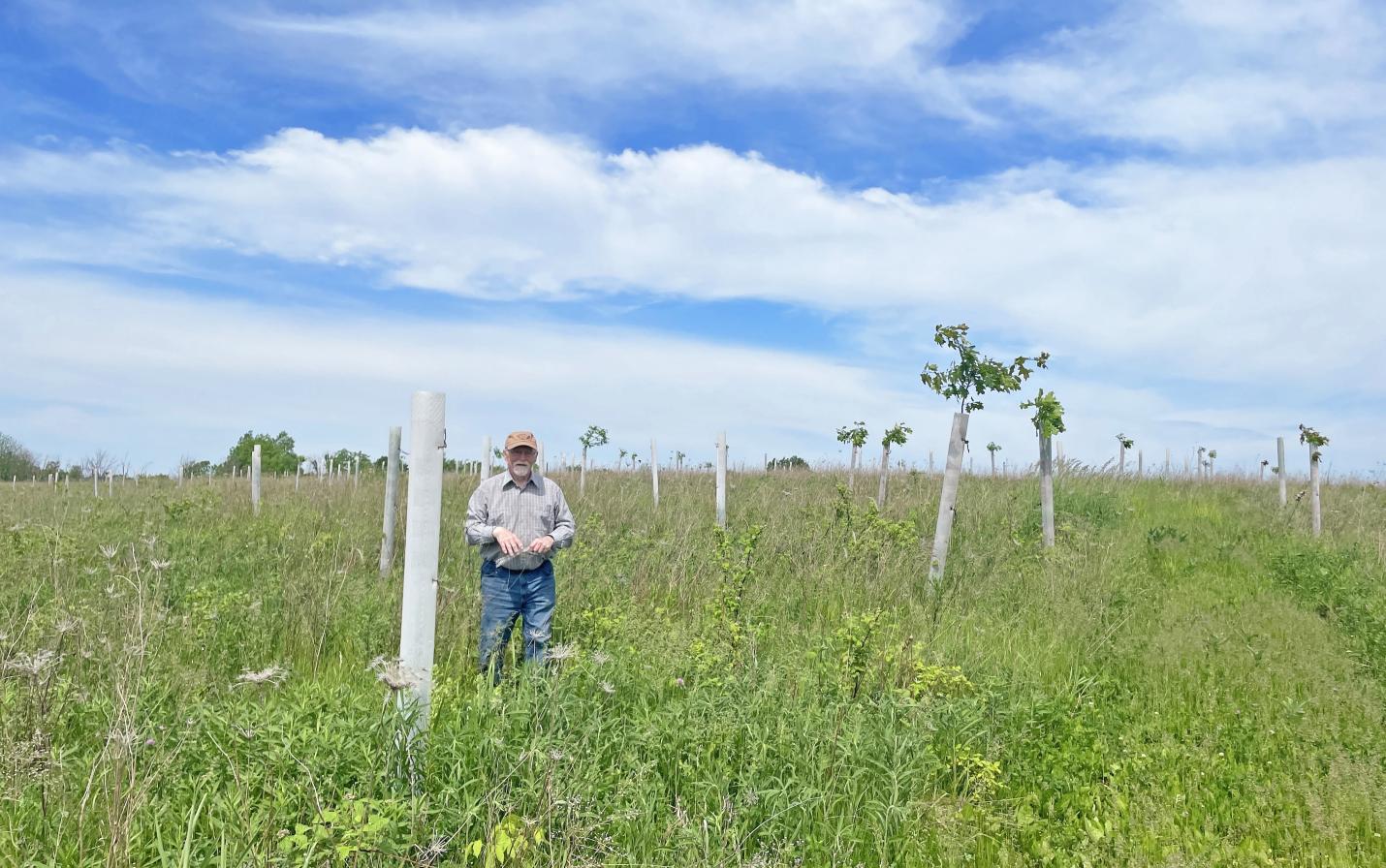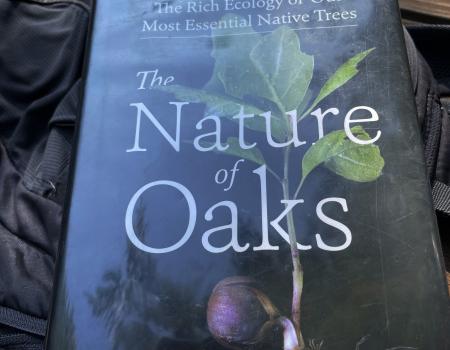
UPDATE: We'll be planting 500 oaks on Saturday, May 18, 2024, in Crawford County. We have a great team of volunteers lined up to help. Let us know if you'd like to join us. Details and sign-up here.
There are thousands of good reasons why conservation-minded landowners are planting oak trees, thousands of them in 2023 alone, on private land and on Mississippi Valley Conservancy’s nature preserves.
The reasons?
Well, chickadees have 6,000 to 9,000 reasons alone – that’s the number of caterpillars each pair must find and feed to rear one clutch of their young, according to ecologist Douglas Tallamy. He writes that oaks are the most prolific providers of food for wildlife of all kinds, especially caterpillars needed by migrating birds in the spring oaks host more than five hundred species – at least a hundred more than the next most productive source.
Tallamy, a University of Delaware entomologist, is the author of Bringing Nature Home, a book that was distributed to Conservancy board members, staff, and others many years ago by an early supporter of the nonprofit land trust. The book added to the awareness in the organization of the key role native plants such as oaks play in our work for wildlife biodiversity and human needs for climate change mitigation.
And that understanding has only grown in importance as the Conservancy develops plans to rebuild the biodiversity and climate resilience of the 1,600-acre Plum Creek Conservation Area it acquired two years ago. There alone, some 11,200 trees, mostly oaks, will soon be planted in fields previously subject to erosion caused by cultivating row crops on steep ridgetop terrain. In addition to being beneficial to wildlife, oaks were selected for the planting because of their deep taproots that give them the ability to withstand predicted drought conditions.
As with extensive plantings in previous years at the Cassville Bluffs State Natural Area, and plantings that include swamp white oak at Trempealeau Lakes, the young oaks have to be protected from browsing by deer – one of the key provisions in successful oak regeneration along with removing the invasive undergrowth, such as buckthorn and honeysuckle, that out-competes the young trees.
Some other examples:
Maggie Jones and David Linton had some 5,000 oak seedlings planted last spring on their protected land in Crawford County. They had previously planted another 5,000 and had also spread 47 bushels of acorns (mixed red, white, and bur oak) on 17 acres that was once row crops and disced them in. “They came up like gangbusters,” Maggie said. Now the task is placing protective tubes on the young trees (see photo above).
Since much of the land protected under easements with the Conservancy is forested, the value of oaks in those forests is another reason for keeping the land undeveloped. Oaks also excel in carbon sequestration – the removal and storage of carbon dioxide from the air. Forest researcher Timothy Fahey of Cornell University estimates a 50-year-old oak forest annually sequesters some 30,000 pounds of CO2 per acre and produces some 22,000 pounds of oxygen.
If the Conservancy’s 25,000+ acres of protected lands have forest coverage that is typical of lands in the Driftless Area, a rough estimate suggests those lands might be sequestering up to 160,000 tons of carbon dioxide per year. That is the equivalent of the amount of carbon dioxide produced by about 35,000 gasoline- powered cars driven for one year (4.6 tons per year for an average passenger car, according to EPA). Exact numbers are hard to come by and the estimate is used here just to give a sense of scale, a sense of how important natural solutions are in the climate crisis. Fahey asserts that carbon storage is an urgent need and outweighs any worries about how durable the sequestration will be in the long run. That view raises the stakes for the conservation work the Conservancy does in mitigating climate change – protecting the lands that are storing away the CO2 that is main cause of our climate chaos.
Above: David Linton stands in a field where thousands of oak seedlings have been planted to restore land where row crops grew before. The current task is placing protective tubes around the young trees. Photo by Dave Skoloda

“If we think of insects not as creatures with six legs, but as food for birds, amphibians, reptiles and mammals, we can start to appreciate the ecological significance of insect declines and why we must reverse them.” That, he concludes in his book, The Nature of Oaks, means planting native species wherever possible, especially oaks.
Tallamy also asserts the importance of oaks, with their enormous root systems, in carbon sequestration and soil stabilization, making them key components of watershed management.
He includes tips for growing oaks and oak best suited for Wisconsin.
And he introduces us to an oak-planting champion – the blue jay, which buries acorns for future use as food up to a mile from the source, not all of which are recovered. “So it’s no wonder that jays have enabled oaks to move about the earth faster than any other tree species.”